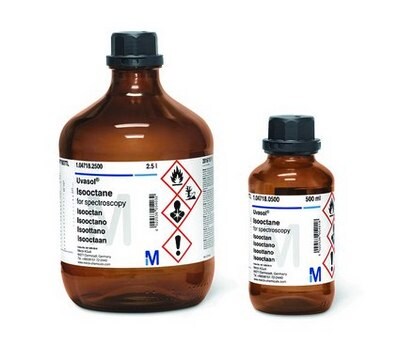16211
Tetrachloroethylene
≥99.5%
Sinonimo/i:
PCE, Perchloroethylene
About This Item
Prodotti consigliati
Densità del vapore
5.83 (vs air)
Livello qualitativo
Tensione di vapore
13 mmHg ( 20 °C)
19 mmHg ( 25 °C)
Saggio
≥99.5%
Stato
liquid
contiene
stabilizer
tecniche
NMR: suitable
Impurezze
≤0.001% free acid (as HCl)
≤0.001% non-volatile matter
≤0.01% water (Karl Fischer)
Indice di rifrazione
n20/D 1.505 (lit.)
P. ebollizione
121 °C (lit.)
Punto di fusione
−22 °C (lit.)
Densità
1.623 g/mL at 25 °C (lit.)
Stringa SMILE
Cl\C(Cl)=C(\Cl)Cl
InChI
1S/C2Cl4/c3-1(4)2(5)6
CYTYCFOTNPOANT-UHFFFAOYSA-N
Cerchi prodotti simili? Visita Guida al confronto tra prodotti
Descrizione generale
Applicazioni
Avvertenze
Warning
Indicazioni di pericolo
Consigli di prudenza
Classi di pericolo
Aquatic Chronic 2 - Carc. 2 - Eye Irrit. 2 - Skin Irrit. 2 - Skin Sens. 1 - STOT SE 3
Organi bersaglio
Central nervous system
Codice della classe di stoccaggio
6.1C - Combustible acute toxic Cat.3 / toxic compounds or compounds which causing chronic effects
Classe di pericolosità dell'acqua (WGK)
WGK 3
Punto d’infiammabilità (°F)
No data available
Punto d’infiammabilità (°C)
No data available
Scegli una delle versioni più recenti:
Possiedi già questo prodotto?
I documenti relativi ai prodotti acquistati recentemente sono disponibili nell’Archivio dei documenti.
Il team dei nostri ricercatori vanta grande esperienza in tutte le aree della ricerca quali Life Science, scienza dei materiali, sintesi chimica, cromatografia, discipline analitiche, ecc..
Contatta l'Assistenza Tecnica.






